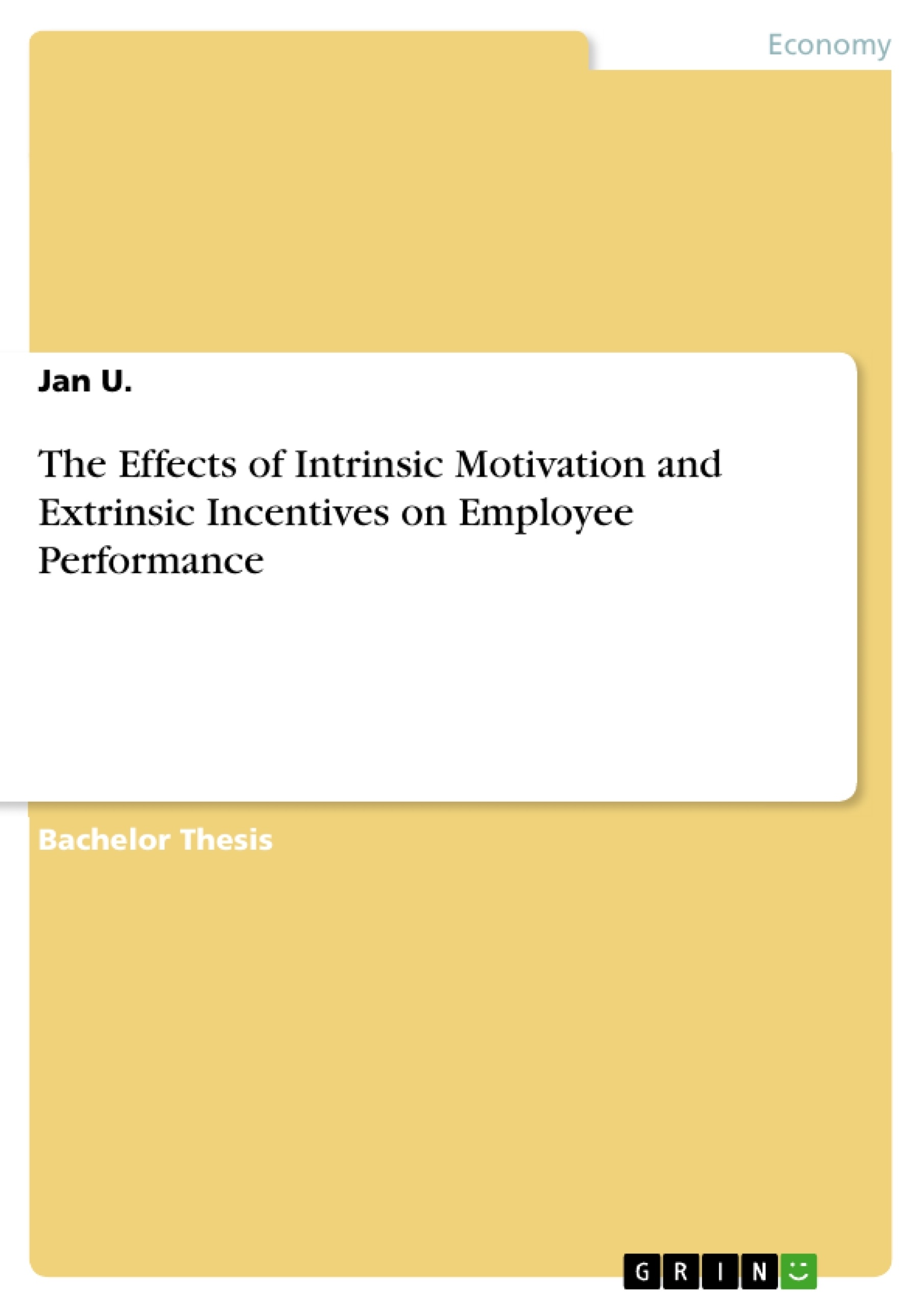The motivation for this work is a result of several factors. At first, the topics of motivation and work performance represent core areas in the fields of management and leadership with essential theoretical and practical implications. Second, various studies have been undertaken in order to examine the direct effects of motivation on work performance showing the high relevance of this issue. For example, the work of Jenkins, Mitra, Gupta and Shaw (1998) verifies a positive link between extrinsic motivation and work performance. Such performance improvements may be essential for companies trying to bet the competition. However, comparable studies examining the effects of intrinsic motivation on work performance tend to be rare. Thus, another reason for this present thesis is to close this substantial research gap.
The topic of motivation has been widely studied from various researchers in several areas. It represents an essential part in multiple research fields, including the ones of management and psychology. Rani and Lenka define motivation as “a process that elicits, controls, and sustains certain behaviors”. Thus, motivated employees are activated to engage in a certain behaviour in an energized way, whereas unmotivated employees may not have any incentive to act. Ilardi, Leone, Kasser and Ryan (1993) validate a positive relation between high levels of motivation and positive work outcomes, such as job satisfaction or well-being. The importance of motivation becomes clear in light of the recent Gallup-study, which states that unmotivated workers lead to substantial losses for businesses.
Until now, a significant number of studies have focused on the effects of motivation on well-being or job satisfaction. However, this thesis has a slightly different focus. It examines the effects of motivation on work performance of employees based on the self-determination theory (SDT) from Deci and Ryan (1985). Therefore, it distinguishes between two types of motivation, namely intrinsic and extrinsic motivation, which will be defined later. This distinction allows to separately examine the effects of intrinsic and extrinsic motivation on work performance as well as the interaction of those two variables and the joint impact of both motivational constructs on work performance.
Inhaltsverzeichnis (Table of Contents)
- 1. Introduction
- 2. Theoretical Background
- 2.1. Self-Determination Theory
- 2.2. Constructs
- 2.2.1. Intrinsic Motivation
- 2.2.2. Extrinsic Motivation
- 2.2.3. Work Performance
- 2.3. The Effects on Work Performance
- 2.3.1. The Effect of Intrinsic Motivation on Work Performance
- 2.3.2. The Effect of Extrinsic Motivation on Work Performance
- 2.3.3. The Interaction of Intrinsic and Extrinsic Motivation and their Joint Impact on Work Performance
- 3. Discussion
Zielsetzung und Themenschwerpunkte (Objectives and Key Themes)
This thesis examines the effects of motivation on the work performance of employees based on the self-determination theory (SDT). It investigates the relationship between intrinsic and extrinsic motivation and their individual and combined impact on work performance.
- Self-determination theory and its core concepts
- Intrinsic motivation and its effects on work performance
- Extrinsic motivation and its effects on work performance
- The interaction and combined effect of intrinsic and extrinsic motivation on work performance
- Theoretical and practical implications of the findings
Zusammenfassung der Kapitel (Chapter Summaries)
- Chapter 1: Introduction: This chapter introduces the topic of motivation and its importance in various fields, particularly management and psychology. It defines motivation and discusses the significance of motivated employees for businesses. The thesis focuses on the effects of motivation on work performance, specifically examining the roles of intrinsic and extrinsic motivation.
- Chapter 2: Theoretical Background: This chapter delves into the self-determination theory (SDT), outlining the distinction between intrinsic and extrinsic motivation. It defines the core constructs of the study, including intrinsic motivation, extrinsic motivation, and work performance. The chapter also discusses the basic psychological needs underlying the SDT and their relationship to intrinsic motivation and need satisfaction.
- Chapter 3: Discussion: This chapter presents a discussion of the theoretical and practical implications of the findings. It explores the limitations of the study and suggests avenues for future research.
Schlüsselwörter (Keywords)
This thesis focuses on the core concepts of motivation, work performance, intrinsic motivation, extrinsic motivation, self-determination theory, basic psychological needs, and the interaction between different types of motivation. The research aims to contribute to the understanding of how motivation affects employees' performance in the workplace.
- Quote paper
- Jan U. (Author), 2016, The Effects of Intrinsic Motivation and Extrinsic Incentives on Employee Performance, Munich, GRIN Verlag, https://www.grin.com/document/1034846



